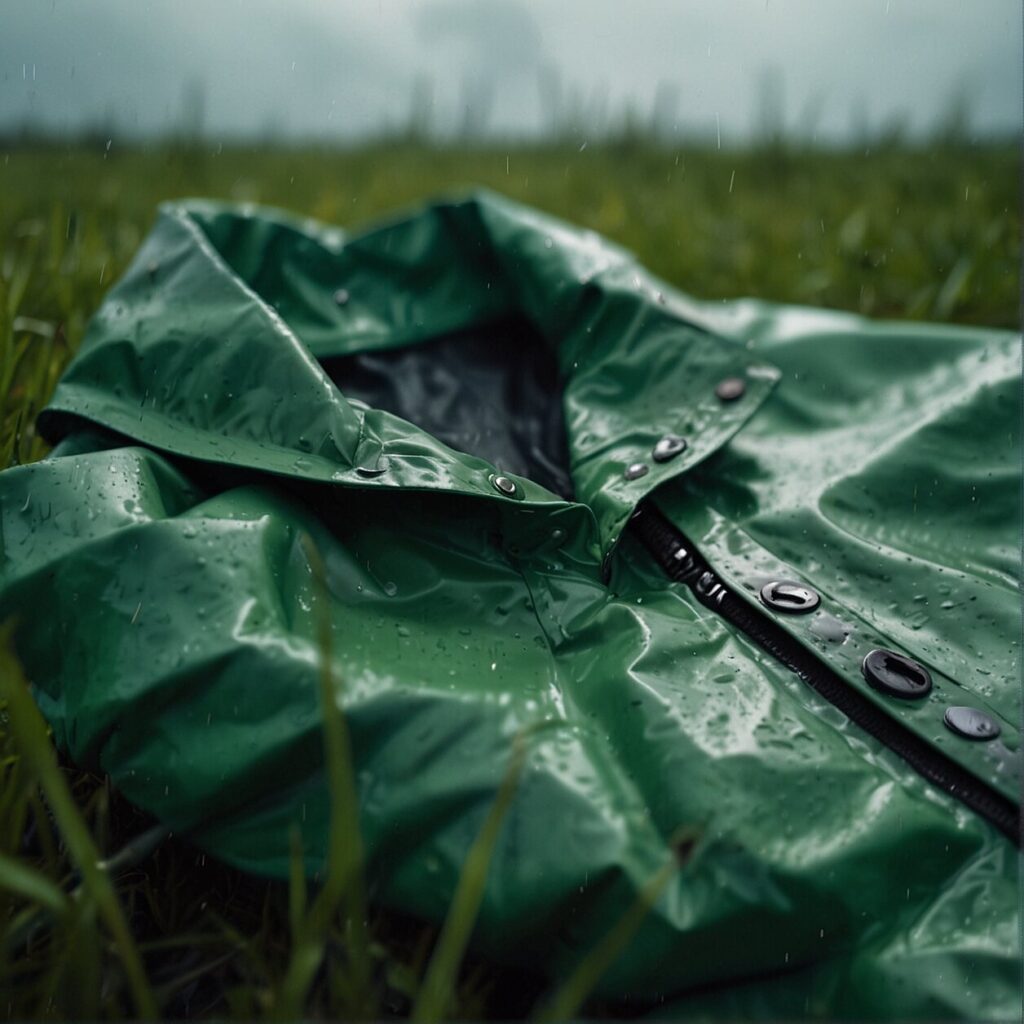Stay Dry, Stay Green: A Look at Eco-Friendly Waterproof Jackets
As the autumn leaves begin to fall and the crisp showers of rain mark the change of season, there’s one essential item on everyone’s checklist – a waterproof jacket. But, are you aware of the potential impact of your clothing choices on Mother Earth? In today’s climate-conscious society, it’s our responsibility to be more aware and make choices that positively affect our planet. So now let’s shift our focus towards advanced, eco-friendly waterproof jackets. These incredible innovations maintain functionality while minimizing environmental impact – shedding light on a new path for the clothing industry towards sustainable fashion.
We’ve all heard of eco-friendly products: those that have minimal effect on our environment. But how exactly does an ‘Eco-friendly Waterproof Jacket’ fit into this burgeoning cadre of green innovation? Together, let’s delve into the world of eco-conscious rainwear, exploring the science behind these technological marvels, the materials that propel them into the realm of sustainability, and the significant impact of our small sartorial choices can have on the vast environmental arena.
Remember, each green choice you make, however small it may seem, is a step towards saving our world. In our hands we hold the power to shape the future of our planet. Let’s harness that power, starting with something as simple as choosing an eco-friendly waterproof jacket.
Unlocking the Science: How Do Eco-Friendly Waterproof Jackets Work?
You might be wondering, ‘How can a jacket be both waterproof and environmentally friendly?’ Well, the answer lies in the kind of materials and process used in their manufacturing. While traditional waterproof jackets rely on chemicals like perfluorocarbons (PFCs) for their water-resistance, eco-friendly waterproof jackets take a green route.
Companies are coming up with creative, sustainable solutions that provide the same water-resistance as PFCs, minus the environmental harm. One such solution is replacing PFCs with a water repellent treatment derived directly from carbon-based compounds or wax. These not only repel water effectively but also drastically reduce the pollution caused during production.
Another major factor contributing to the eco-friendliness of these jackets is the use of recycled or natural materials. Jackets made up of recycled nylon or polyester divert waste from landfills and reduce the need for virgin materials. Some even use unique materials like recycled coffee grounds or naturally waterproof wool.
Beyond the materials, the processes involved in manufacturing these jackets also aim to reduce energy consumption and carbon emissions. They make use of technologies such as solar power and efficient machinery. This in itself adds a significant greener tag to your eco-friendly waterproof jacket.
It’s a wonderful blend of going green while still maintaining functionality. Through smart science and technological advancements, you get to stay dry, warm, and contribute to conservation efforts simultaneously. Isn’t that splendid?

Breaking Down the Materials: What Makes a Jacket Eco-Friendly
So, you might be wondering, what exactly goes into making an eco-friendly waterproof jacket? Excellent question! It all comes down to the materials used and the manufacturing processes involved.
The majority of conventional waterproof jackets are created using synthetic fabrics such as polyester or nylon, which are derived from non-renewable petroleum resources. This manufacturing process typically tends to have a high carbon footprint and can also result in harmful pollutants being released into the environment.
Eco-friendly waterproof jackets, on the other hand, utilise more sustainable materials and practices. This could involve the use of recycled materials, like plastic bottles, which are transformed into recycled polyester. Some brands even use innovative bio-based materials derived from plants, reducing the dependence on fossil resources.
Their production process also tends to be less energy-intensive and more mindful of water use. In addition, eco-conscious brands often use PFC-free (Perfluorocarbons) Durable Water Repellent (DWR) treatments to ensure their jackets are waterproof without releasing harmful chemicals into the environment.
Beyond this, it is crucial to consider the jacket’s lifecycle. Many environmentally-friendly brands strive for circularity, crafting garments designed to last and offering repair services to extend their life. And when the jacket has served its purpose, it can often be recycled to create new eco-friendly garments, successfully closing the loop.
Investing in an eco-friendly waterproof jacket is not just about purchasing an item of clothing. It’s about supporting companies that are taking active steps to lessen their environmental impact. That being said, the challenge for the consumer lies in learning how to distinguish greenwashing from genuine eco-friendly practices, which is no small feat in today’s market.
Small Choices, Big Impact: Choosing Eco Friendly Over Traditional Waterproof Jackets
You, my friend, have a powerful role to play in this eco-friendly revolution. And your choices! Oh, aren’t they grander than you ever comprehended? Each decision you make—big or small—can mean the world to our environment. The choice between an eco-friendly waterproof jacket and a traditional one might seem insignificant at first. But let me assure you, it’s anything but.
Reducing carbon footprint
A surprising amount of energy goes into the production of a single rain jacket—right from sourcing materials to manufacturing and shipping the final product across the globe. Traditional waterproof jackets often use materials like nylon or polyester, which are derived from petroleum and contribute to greenhouse gas emissions. On the other hand, eco-friendly jackets use recycled or sustainably sourced materials, cutting down on carbon emissions and waste in the process.
Chemical usage
Waterproofing in traditional jackets is usually achieved using Perfluorocarbons (PFCs). These chemicals are notorious for their persistence—they don’t break down in the environment and can adversely affect both wildlife and human health. Green jackets, however, avoid these harmful substances, opting for safer alternatives like Polyurethane (PU) or waxed coatings.
Economic longevity
Think about the lifecycle of your jacket. With their durable construct, eco-friendly waterproof jackets often outlast their non-green counterparts, translating to fewer purchases over time and less waste being generated.
In a nutshell, going for an eco-friendly waterproof jacket is not just beneficial for the environment, but it also makes practical sense for you in the long run. Remember, it’s not just a jacket—it’s a statement about the world you want to live in.

The Green Score: Rating the Best Eco Raincoats
Let’s dive deeper into our green score, a unique system we’ve devised to rate eco-friendly raincoats. This system considers three major aspects: the materials used, the manufacturing process, and the end-of-life plan.
Materials Used
All jackets aren’t created equal, and the environmental cost can vary immensely depending on the materials used. To be classified as eco-friendly, jackets should ideally be made from environmentally conscious materials like recycled plastic bottles. The fewer new resources used, the better. Therefore, brands that utilize repurposed materials fetch higher scores on our scale.
The Manufacturing Process
This factor is often overlooked but vital. The process includes dyeing, treating, and piecing together materials, which consume a lot of energy and often involve a vast amount of water and chemicals. Those manufacturers who’ve made a clear effort to reduce their impact score higher in this category. It could mean using less water or ensuring all wastewater is treated before release, for instance.
The End-of-Life Plan
Even the greenest jacket has an environmental cost if it ends up in the landfill. That’s why, in our rating system, big kudos goes to brands that have an end-of-life plan for their jackets — think recycling programs or take-back schemes. The ability to repair a jacket extends its usage, reducing the environmental footprint. This handling will give that jacket a significant boost in our rating system.
Now you know what our ‘green score’ embodies. It gives you an insight into what we’re looking for when we recommend an eco-friendly waterproof jacket. It’s a tool that guides us towards the outfits that are not only kind to you – keeping you dry and comfortable – but also kind to the planet. So, when you’re ready to buy that perfect rain jacket, remember these factors. Because every small step makes a big difference.
Staying Dry Without Drying Out the Planet
You see, staying dry in a downpour doesn’t mean you have to compromise on your environmental responsibilities. Waterproof jackets, when mindfully chosen, can wonderfully maintain a balance between functionality and sustainability.
But how, you may ask?
It’s all about the choices involved – from design, production, to the very end of its lifecycle. Companies that are committed to creating eco-friendly jackets focus on a circular approach in which they aim to reduce waste, lower carbon emissions, and more importantly, extend the life of the jacket as long as possible.
Many eco-friendly jackets are made from recycled or upcycled materials, like plastic bottles. This way, instead of polluting the environment further, they are being reused, saving energy and resources. Moreover, some companies even offer repair or recycle systems, where you can return your worn-out jacket for mending or recycling. This way, the lifecycle of the jacket is extended, further reducing its overall environmental impact.
Responsibly sourced plant-based materials such as hemp and cork are also often implemented, reducing the reliance on petrochemicals that are often used for water resistance. By opting for innovative natural materials, these jackets continue to provide the waterproofing you need without the negative environmental repercussions.
That said, it’s not just about the jacket being eco-friendly, but also its performance. The last thing you want is your eco-friendly waterproof jacket failing you when you need it the most. But fear not, most eco-friendly jackets are just as good, if not better, than conventional ones when it comes to waterproofing and durability.
So, when choosing your next waterproof jacket, consider the environment as well as your needs. Staying dry without drying out our planet is very much possible – with the right choices!







